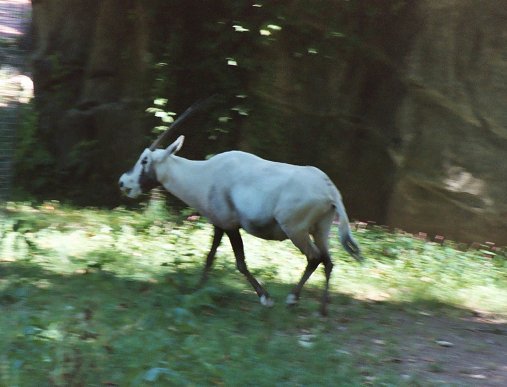

Oryx leucoryx
The Arabian Oryx is the smallest member of genus Oryx. They live in desert and arid areas of the Arabian peninsula.
Oryxes eat buds, grass and leaves. They can go for weeks without drinking water, and can detect rainfall and will move towards it. This implies that herds (usually consisting of 8-20 animals) have huge ranges of up to 3,000 square kilometres.
Before the beginning of the nineteenth century, oryxes were abundant in all parts of the Arabian Peninsula, but by the early 1970’s this species was almost extinct in the wild. However, a few animals had been rescued and bred in captivity in American and European zoos and the numbers increased very succesfully. Some of the captive animals were reintroduced to their native habitats, with mixed success. Unfortunately, this reintroduction was not always seen favorably by local governments. In the summer of 2007, Oman’s Arabian Oryx Sanctuary was removed from the World Heritage List of UNESCO in light of the Omani government’s decision to reduce the Oryx’s habitat by 90%, apparently because the land was deemed more valuable for oil extraction than this animal’s preservation. The Omani population of wild oryxes has dwindled from 450 in 1996, to less than 65 in 2007 (with fewer than four viable breeding pairs) due to poaching and habitat degradation. (See: UNESCO, Wikipedia.)
The picture of this Arabian Oryx was taken at the Lincoln Park of Chicago, Illinois, in August 2004.
Genus Oryx
Subfamily Hippotraginae
Family Bovidae
Order Artiodactyla
Subclass Eutheria
Class Mammalia
Subphylum Vertebrata
Phylum Chordata
Kingdom Animalia
Life on Earth
Index